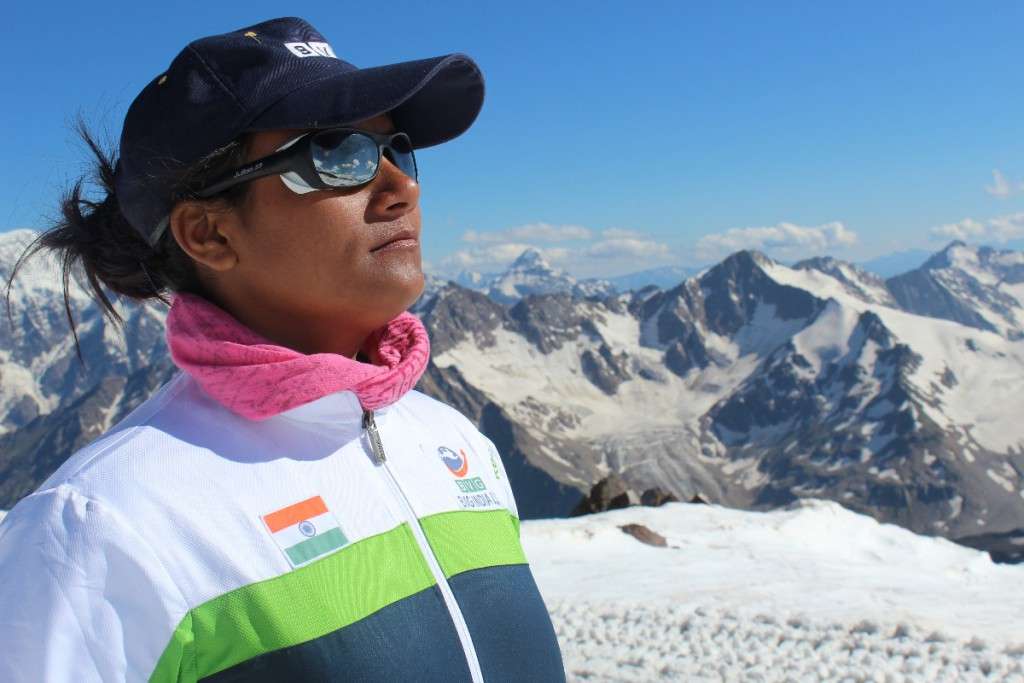
"Give Mount Everest a rest," said Sir Edmund Hillary, 50 years after his historical conquest of Mount Everest.
Sir Edmund Hillary and Tenzing Norgay were the first men to scale Mount Everest. However, half-a-century and 1,300 climbers later, Hillary said in 2003 that the time had come to give the mountain a rest.
Few paid heed to the veteran mountaineer's advice. As of 2016, 4,000 climbers have scaled the world's tallest peak. Over 250 have lost their lives in the colossal journey, as the ascents continue to happen year over year.
Unfortunately, the commercialisation of the climb has evidently taken its toll on the Everest.
According to a report, the Everest death zone houses most of the 120-plus bodies that lie frozen on the mountain.
Catch spoke to Arunima Sinha, an amputee mountaineer, who conquered the summit in 2013. She opened up about the repercussions and solutions to excessive hoardings at the Everest.
Q) Do you believe that the ascent has lost its true value for some mountaineers?
It is true that for some people the Everest has turned into nothing less than a tourist destination. People are ready to shell out hoards of money to seek adventure and earn publicity rather than to actually take on the journey as a challenge.
I personally believe that if you do not respect the summit, it will throw you back to the ground. I have climbed five summits so far. Before every ascent, I make sure to join my hands and bow before the mighty.

Q) Why did you pick to scale the Everest?Tell us about your summit.
I chose to conquer Everest because I wanted to prove myself despite my disability. Despite preparing hard, I faced the worst at the peak. I almost ran out of the oxygen and my artificial limb kept dislocating. I am thankful to my Sherpa who stood by me all through this. But I never have let the conquest take over my fears of scaling those heights. I am afraid before every ascent.
Q) Is the rampant commercialisation affecting the summit and the mountaineers?
There has been an unprecedented rise in the number of adventure-seeking mountaineers over these years. However, most of them have minimal training or no training at all. I have seen people who say that they want to complete the journey in a week. I am appalled at their ignorance. Their lack of understanding of the mountain and the risk the journey entails results in accidents and deaths. And the mess up there. Human waste, cylinders, flags and what not. The summit has literally turned into a dumping ground.
Moreover, the commercialisation discourages mountaineers like us, We see people getting to scale the summit just by shelling handsome amounts. After all, money can buy you the journey but not the satisfaction.
Q) What do you suggest should be done to lessen the damage?
There should definitely be a cap on permits. People should go in smaller teams rather than jamming the route with a crowd. While certifying the outfitters, the government should ensure that they meet acceptable standards of safety and mountain knowledge. This also holds up for the tourists who need to be acquainted with the mountain.
Further, the government should set up strict norms against human waste and littering during the journey and should penalise those who do not cooperate.
I have seen people pushing the dead bodies by their feet as they scale up the mountain. This is utterly inhuman and disrespectful for the dead. The government should make possible arrangements to remove these corpses.
First published: 11 June 2016, 11:47 IST


![BJP's Kapil Mishra recreates Shankar Mahadevan’s ‘Breathless’ song to highlight Delhi pollution [WATCH] BJP's Kapil Mishra recreates Shankar Mahadevan’s ‘Breathless’ song to highlight Delhi pollution [WATCH]](https://images.catchnews.com/upload/2022/11/03/kapil-mishra_240884_300x172.png)

![Anupam Kher shares pictures of his toned body on 67th birthday [MUST SEE] Anupam Kher shares pictures of his toned body on 67th birthday [MUST SEE]](https://images.catchnews.com/upload/2022/03/07/Anupam_kher_231145_300x172.jpg)






